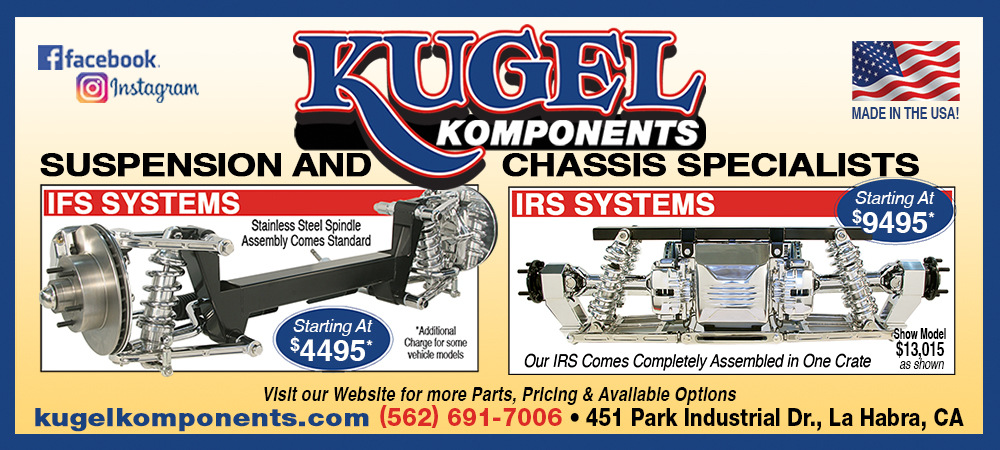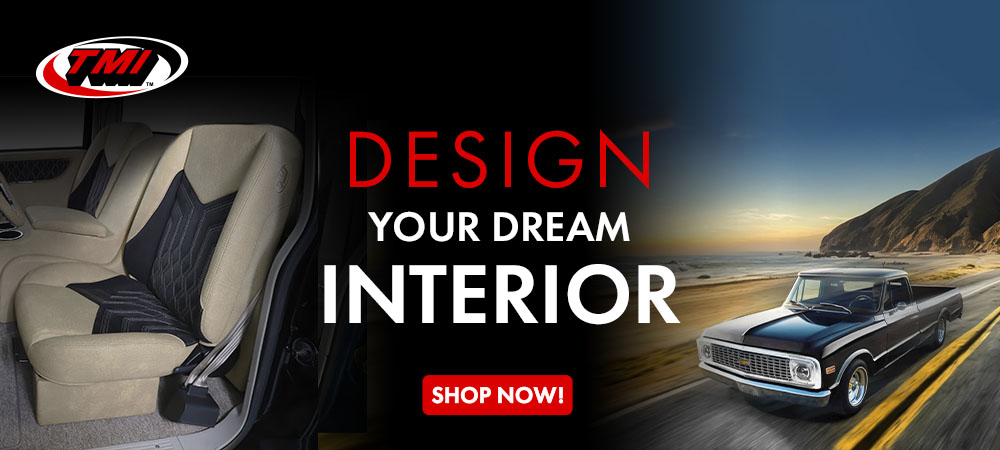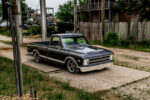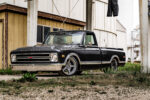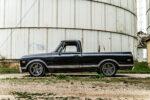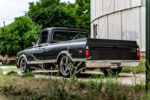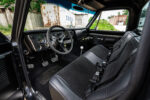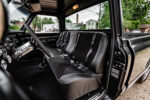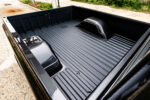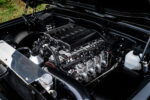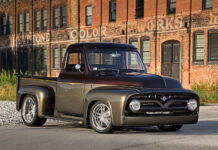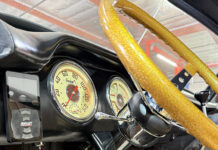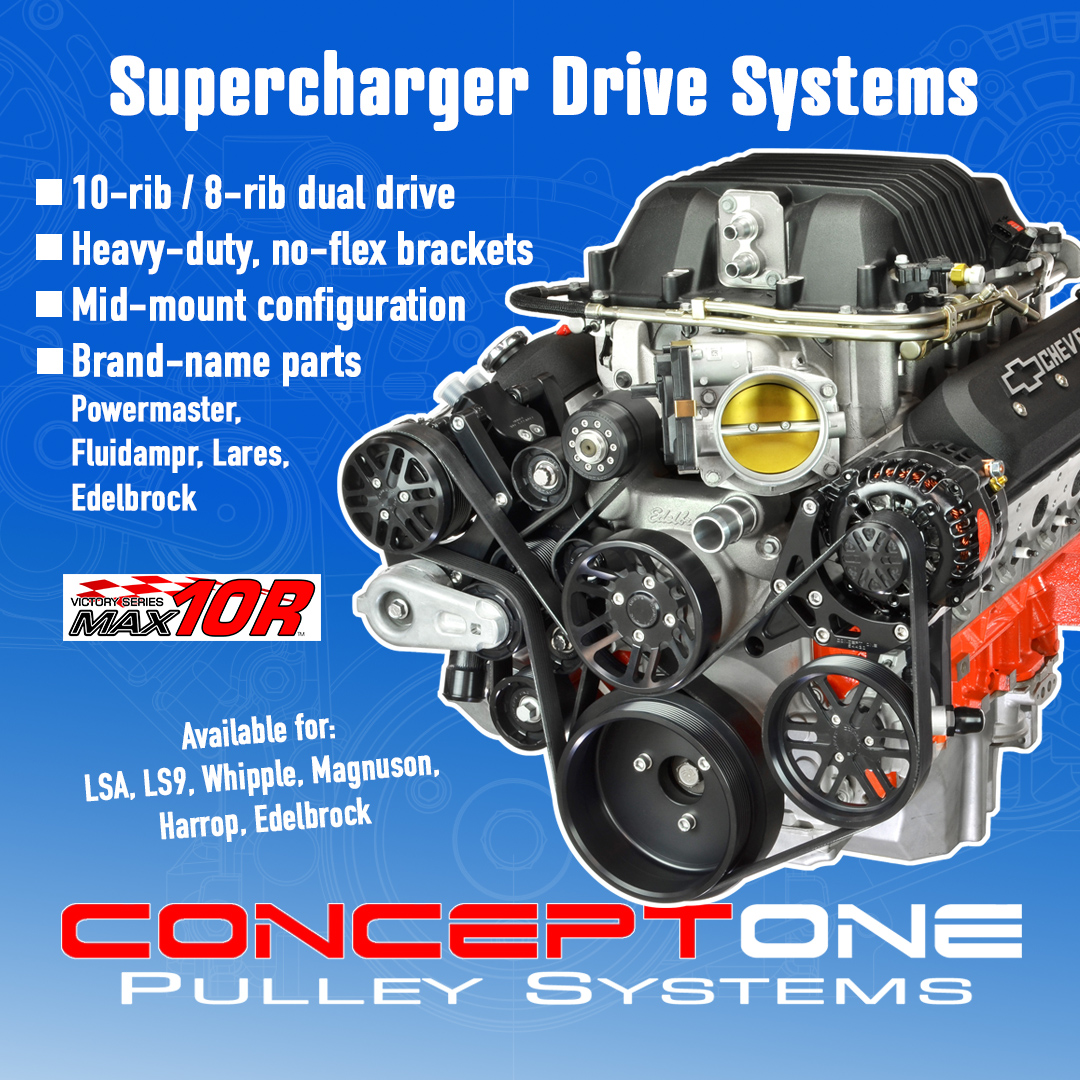By Todd Ryden – Images by Matt Lankford
Building and driving a vintage muscle car or truck can sometimes leave one conflicted. Classic vehicles are just so cool to see driving down the road or jumping out from the crowd of commuters. However, they may not live up to your expectations when it comes to ease of driving, comfort, or handling.
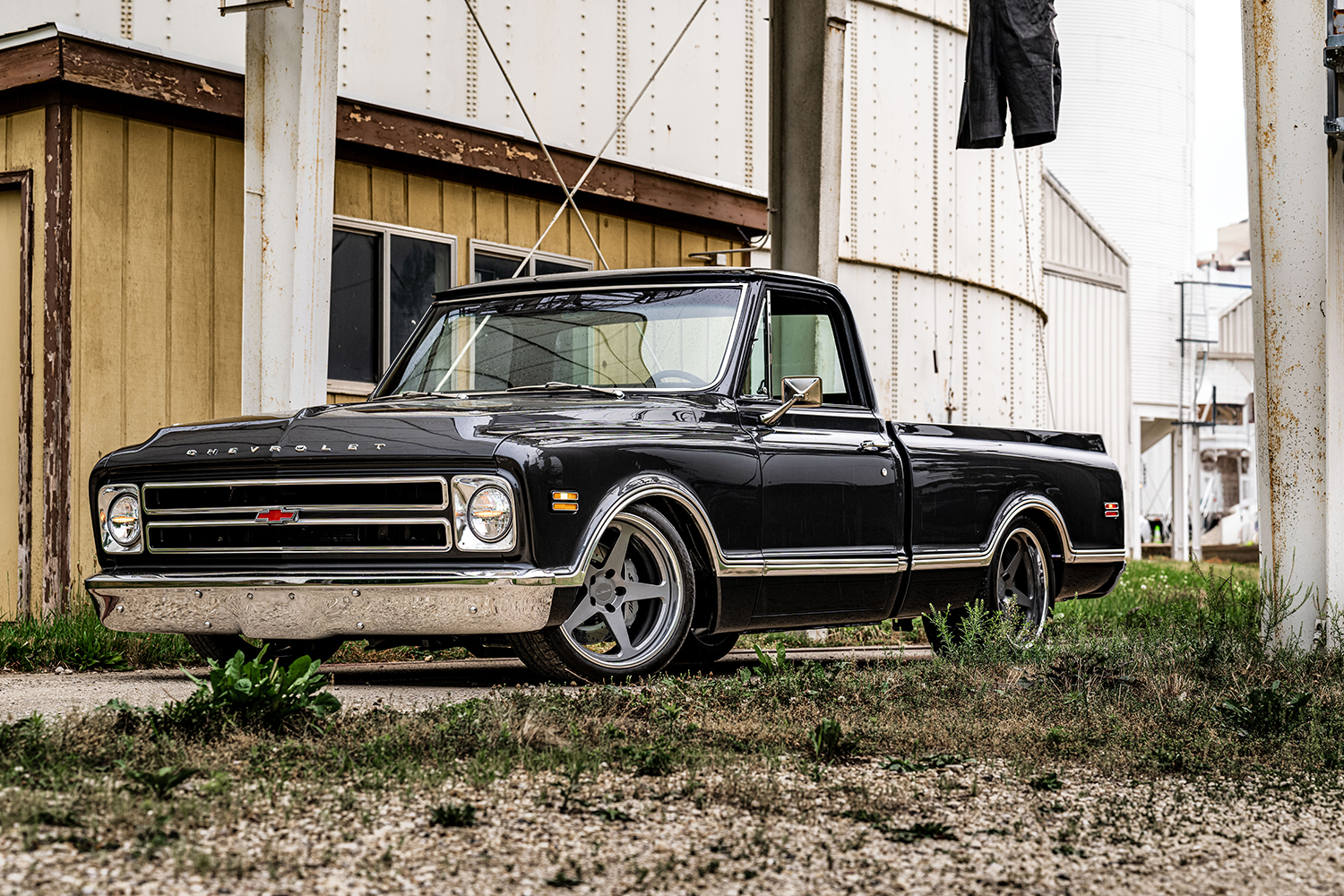
For years, Cameron Smith pined for a muscle car with serious performance and power. His answer came in the way of a jet black 1966 Chevelle SS with a Pro Touring stance on a set of American five-spoke Torq Thrusts with beefy tires tucked nicely under the fenders. The Super Sport received the requisite bolt-on suspension and brake components as well as a serious 427ci big-block. The combination proved wicked fast but was best suited to a straight line.
As Cameron explains, “The car looked great, had a ton of power, and was built with high-end upgraded parts. But the sum of those parts didn’t produce a well-engineered vehicle.”
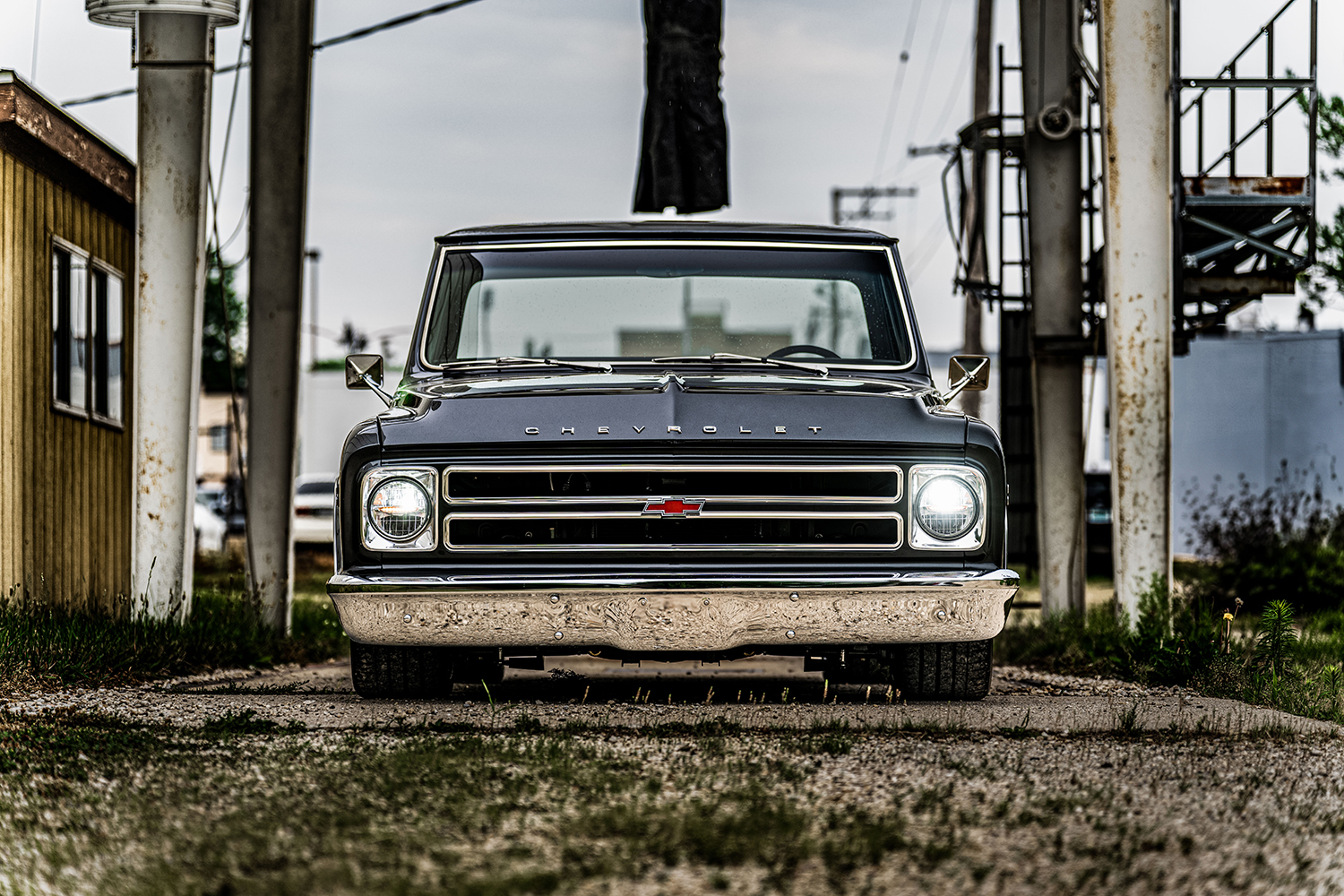
In short, the Chevelle checked a lot of boxes Cameron wanted in a modernized muscle car, but unfortunately it left a lot unchecked in his expectations as a comprehensive performance driving machine.
“I wanted a vehicle with a solid foundation and structure that worked as a whole, including the suspension, the braking, cooling, and a modern driveline,” Cameron says. This is where the Chevelle fell short, and he wanted his next project to meet these expectations.
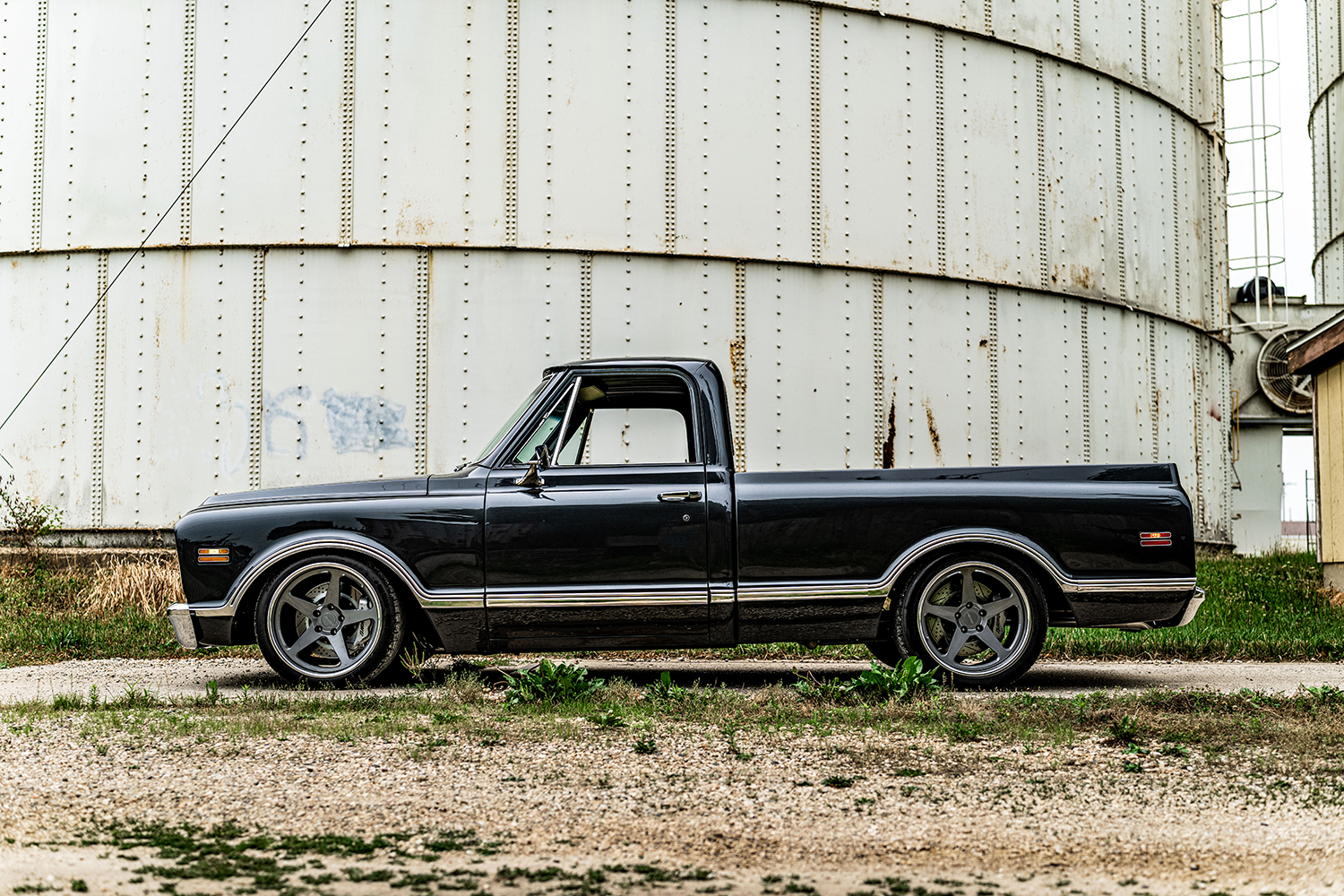
With those parameters, he started researching complete aftermarket chassis offerings and builders, which eventually led him to Schwartz Performance in Harvard, Illinois. Schwartz was on the forefront of a complete bolt-in chassis for vintage muscle cars and classic trucks with their G-Machine chassis. Once Cameron discussed his detailed goals for his upcoming truck project with Jeff Schwartz, not only did he decide to run their chassis but also entrusted their team to handle the build. It was time to get Cameron’s truck project rolling.
“I learned to drive a manual trans in my father’s 1969 Fargo and my first three vehicles as a teen were all pickups,” Cameron says. “So having a classic pickup that could handle performance and be as reliable as any modern car was my goal.”

The first hurdle was to decide between a 1967-1972 Chevy or an F-100 as he’s a fan of both. The deciding factor came down to the drivetrain options available and the Connect and Cruise options from Chevrolet Performance really struck him as the way to go. His first choice was an LT5 backed by a six-speed transmission, so a 1968 big window shortbed was located.
Once delivered to Schwartz the C10 was promptly blown apart and media blasted only to uncover rust and shoddy repair work requiring more sheetmetal work than expected, but the project marched onward. The exterior was left pretty much stock, with the bed receiving most of the custom work. The wheelwells were widened and the floor was raised 2-1/2 inches. Underhood received a set of Hart Fab inner fenders while the firewall was smoothed for a clean look. Once the sheetmetalwork was complete the crew at Schwartz sprayed a perfect layer of Axalta’s Watkins Glen Gray Metallic.
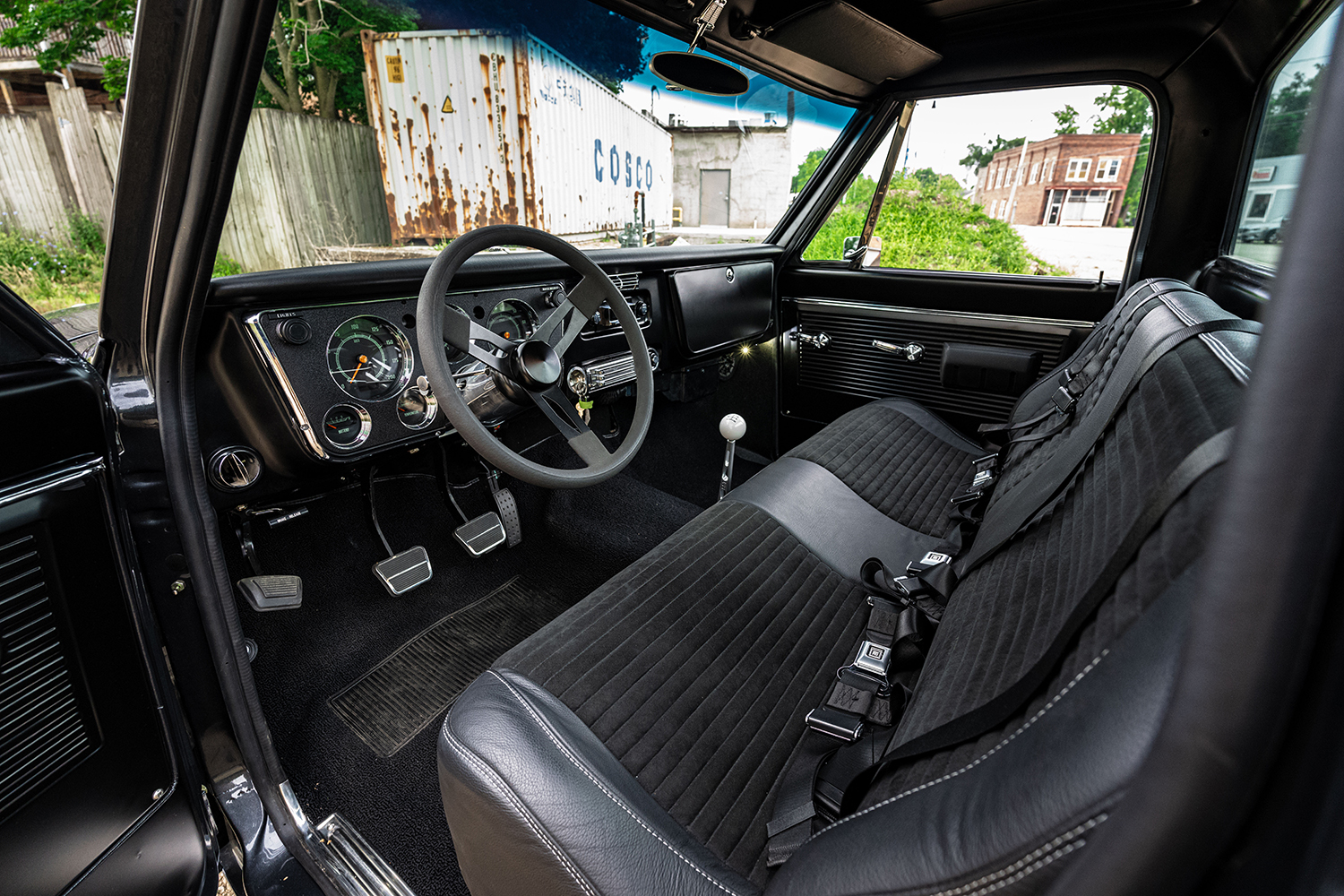
For power, Cameron already had his mind made up for a Chevrolet Performance LT5 boasting 6.2 liters of displacement while producing just shy of 700 rwhp and 633 lb-ft of torque. A TREMEC T-56 trans is stirred through a SilverSport shifter and Ram Dual Disc Clutch. With all that power on tap, the need for a strong foundation was more important than ever and would be handled by a G-Machine chassis.
Schwartz uses 6-inch framerails on their truck chassis with a front suspension comprising of needle bearing–supported tubular control arms complemented with Ridetech adjustable coilovers. The rear suspension consists of a triangulated four-link, Ridetech coilovers, a full-floating rearend filled with 31-spline axles, and a Truetrac posi. Serious stopping power is delivered by a set of Baer’s Pro+ six-piston calipers and 14-inch rotors with beefy Forgeline FF3C wheels and Continental tread.
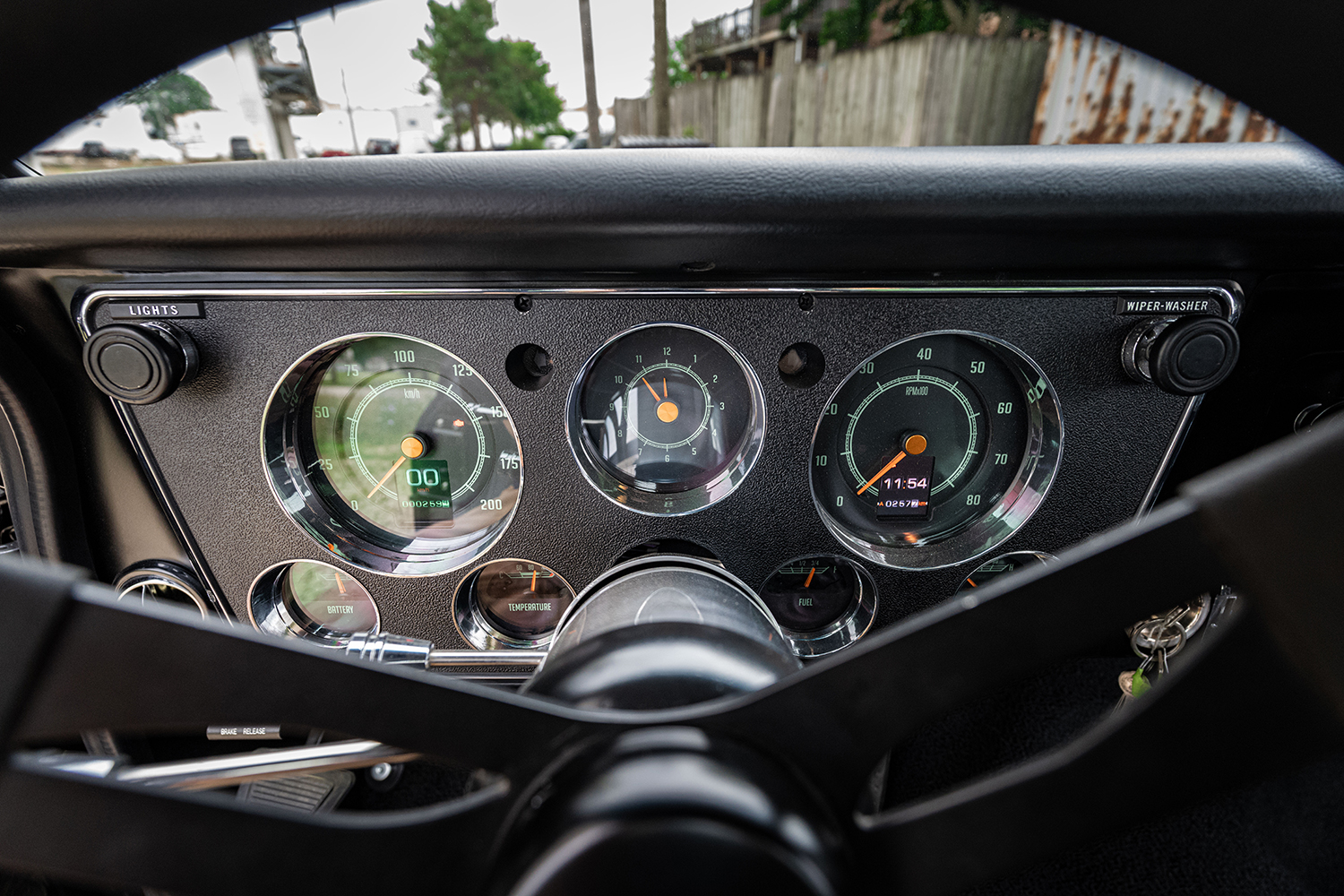
Inside, the stock Chevy dash was refined with a set of Dakota Digital RTX gauges, a Flaming River column, and a Vintage Air climate system. The factory bench seat was reworked with high-density foam, added bolstering, then covered in black leather with Alcantara inserts by Cassin Customizing.
In the end, Cameron got the vintage truck he wanted; a pickup with classic looks yet with oodles of modern power on tap tied together in a well-balanced machine. One that feels right at home cruising to the ice cream shop or holding its own pushing a new Corvette through a cloverleaf highway entrance!
Check out this story in our digital edition here.













